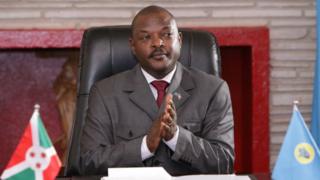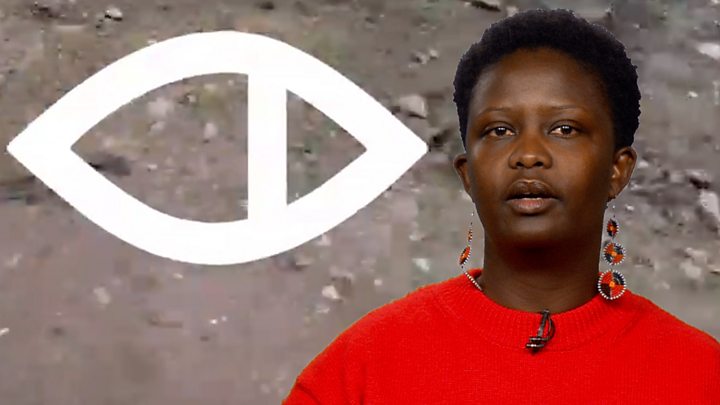Why Burundi has renamed its airport and other landmarks
Burundi’s President Pierre Nkurunziza has controversially renamed the country’s national landmarks to reflect the historical contribution of the majority Hutu ethnic group.
Renaming the national stadium, the presidential palace and main airport was meant to “remind Burundians of their history,” he said in his independence-day speech.
Critics, however, say the move was meant to erase the contribution of members of the minority Tustsi community.
Burundi marked its 57th independence day on 1 July.
Since independence from Belgium in 1962, the landlocked central African country has been plagued by tension between the Hutu majority and Tutsi minority.
Mr Nkurunziza, a Hutu former rebel leader, became the second president to be chosen in democratic elections. He was elected in 2005 after the end of a brutal civil war.
In 2015 Burundi was plunged into another crisis when Mr Nkurunziza’s ultimately successful bid for re-election to a third term sparked protests by opposition supporters, who said the move was unconstitutional.
In March 2018, the governing CNDD-FDD party named Mr Nkurunziza the country’s “eternal supreme guide”.
A referendum two months later overwhelmingly voted for constitutional reforms that could allow President Nkurunziza to stay in office until 2034.
In his independence-day speech, the 54-year-old leader said the exercise to rename the country’s landmarks was meant to deal with betrayal:
“This move is also to remove names that emerge from betrayal and bad behaviour brought in by colonialism,” he said.
These are some of the landmarks he has renamed:
National stadium
The main stadium in the former capital city of Bujumbura, which hosts football matches and national day celebrations, is now officially called Heroes Stadium.
It used to be named after Louis Rwagasore, one of the most revered and prominent figures in Burundi’s history.
His portrait is also used in the country’s currency.
He served as the country’s first prime minister but was assassinated before the country attained independence in 1962.
Every 3 October the country celebrates his memory.
Although he is losing the national stadium, President Nkurunziza said the new parliament building in the new yet-to-be-built capital city of Gitega will be named after Rwagasore.
Burundi International Airport
The main airport in Bujumbura will now be called Merchior Ndadaye after the country’s first democratically elected president.
The ethnic Hutu only ruled for three months in 1993 before he was assassinated after his reforms antagonised the Tutsi-dominated army.
His killing sparked a new round of violence which plunged Burundi into an ethnic conflict which claimed some 300,000 lives.
The 3rd September street
The date marks the day former military leader Pierre Buyoya overthrew his cousin President Jean-Baptiste Bagaza in 1987.
Mr Buyoya, a Tutsi came into power promising to heal the fractious relationship between Burundi’s ethnic groups but instead oversaw a brutal campaign, which led to a Hutu uprising in 1989.
The famous street in Bujumbura will now bear the name of Lt-Gen Adolphe Nshimirimana, an ally of President Nkurunziza, who was assassinated in 2015 months after an attempted coup against the government.
Lt-Gen Nshimirimana was the head of the intelligence unit and gained a reputation as a feared and ruthless operator.
Presidential palace
The new presidential palace was renamed after King Ntare Rushatsi.
It cost $22m (£19m) to build and was reportedly a gift from China.
The legendary King Rushatsi is seen as having been the founder of the Burundi kingdom in the 1500s.
Source: Read Full Article




